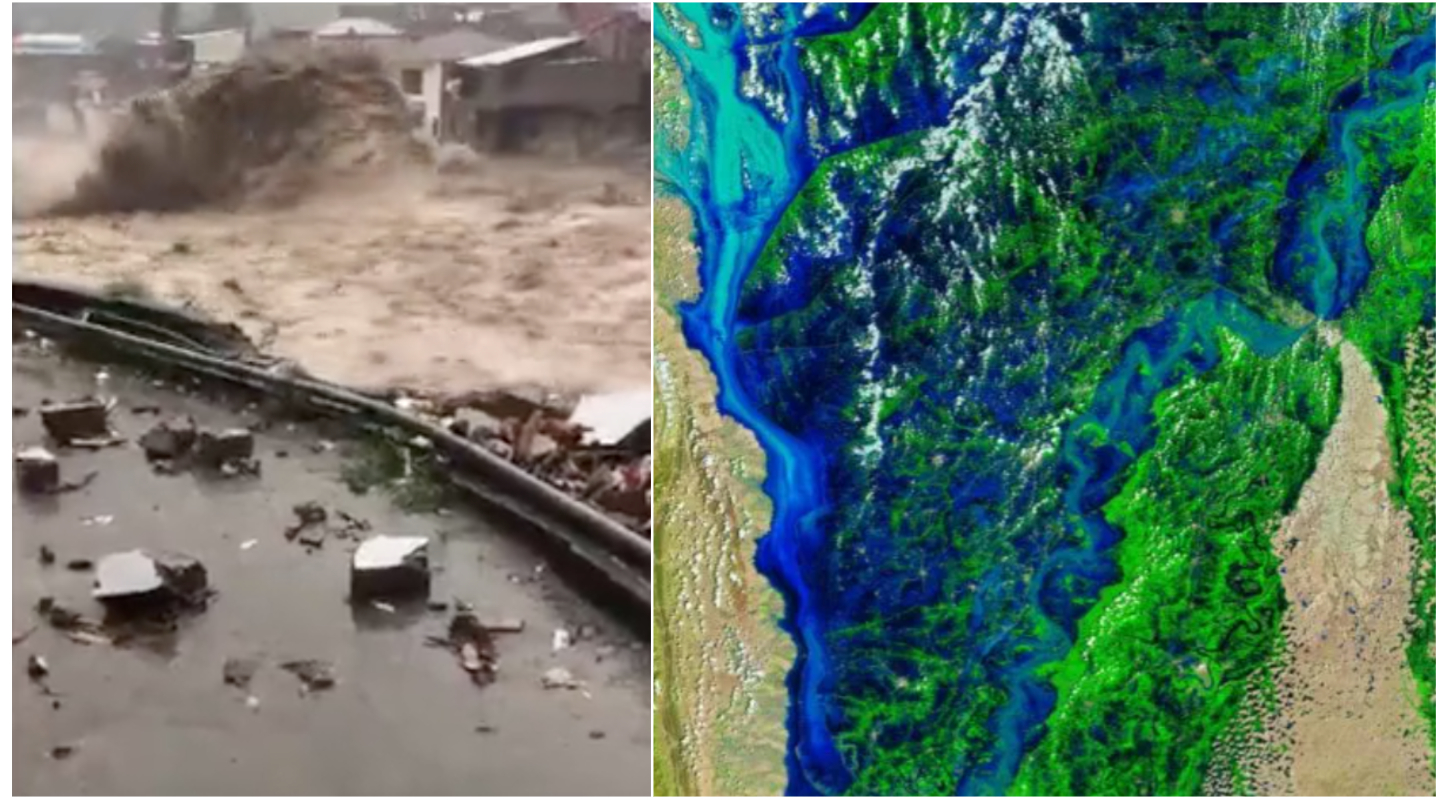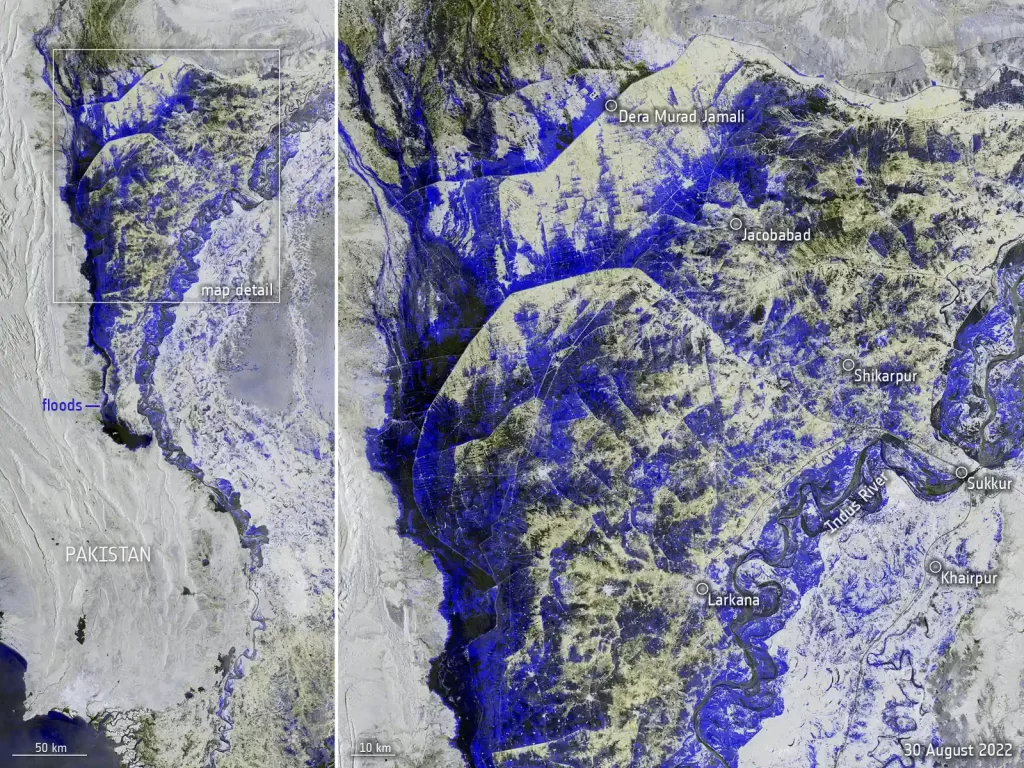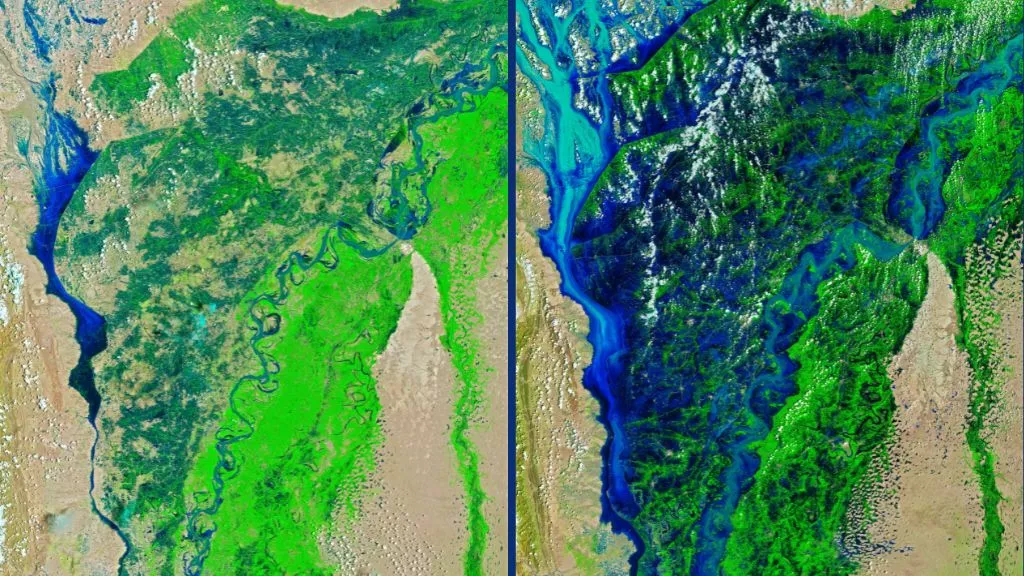News
“A Monsoon On Steroids”: Pakistan Flooding Is So Devastating It Can Be Seen From Space, Third of Country Now Underwater
The flooding has killed more than 1000 people. It’s hard to comprehend the scale of the disaster unfolding in Pakistan.

Rains associated with the monsoon season are nothing new for Pakistan. They are able to make a note of it on the calendar between the months of June and September. But the rainfall just kept coming and coming throughout this year. This is some of the worst flooding Pakistan has ever seen.
The rains were so bad that the water just has no where to go.
“The Pakistani people are facing a monsoon on steroids, the relentless impact of epochal levels of rain and flooding,” Antonio Guterres, the Chief of the United Nations, said in a video statement. “This climate catastrophe has killed more than 1,000 people with many more injured.”
According to NASA, many regions have already received five to six times the amount of rainfall that is typical for a whole year. This is an astounding number when one considers that the data used to calculate the average spans a period of thirty years and includes the information from 2010, the year in which the county saw the worst monsoon floods in its entire recorded history that killed over 2000 people.
The melting of mountain snow and glaciers has only made the problem worse. According to NASA, Pakistan has the largest concentration of glacier ice that can be found outside of the polar regions. Mountain rivers get clogged with runoff as a result of precipitation during the monsoon season and melting snow, which then causes landslides to occur.

At the end of September, according to forecasts from the Pakistan Meteorologist Department, the monsoon season should begin to wind down.
From outer space, satellites were able to capture evidence of the record deluge. The magnitude of the damage caused by this year’s monsoon floods can be seen in images released by both Maxar and NASA.
As fresh satellite photographs seemed to reveal that a third of the country is now inundated with water, aid workers urged for immediate contributions to combat the “absolutely devastating” effect of the floods, the Guardian reports.
During the same time that the Disasters Emergency Committee (DEC) of the United Kingdom issued an appeal to collect funding for the 33 million people impacted by the disaster, the European Space Agency (ESA) published striking photos based on data obtained by its Copernicus satellite.

According to a report by NPR, the flooding in Pakistan has impacted more than 33 million people and caused more than 1,100 deaths since the middle of June, including hundreds of children. The flooding was caused by extremely strong monsoon rains.. The floods have caused damage to over one million houses, as well as millions of acres of agriculture, hundreds of kilometers of highways, and other infrastructure.
Satellite photos that were released on the 28th of August by the NASA Earth Observatory (opens in new tab) highlighted how the floods had altered the terrain throughout the nation between the beginning and end of the month of August.
Typos, corrections and/or news tips? Email us at Contact@TheMindUnleashed.com
